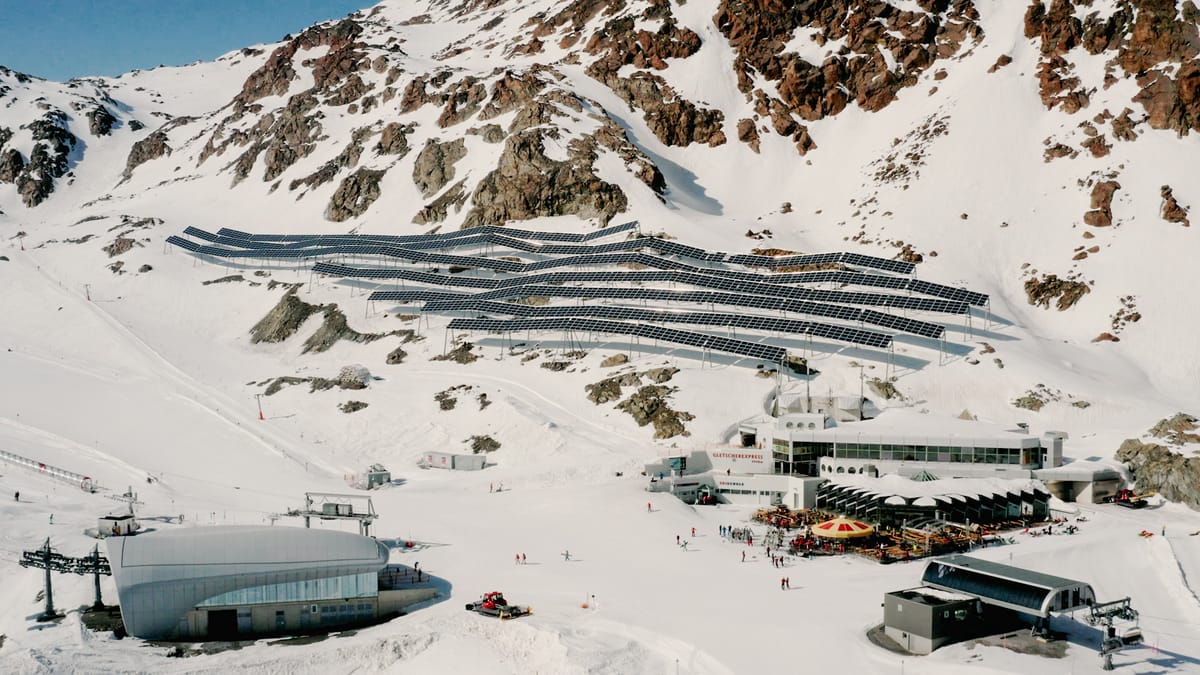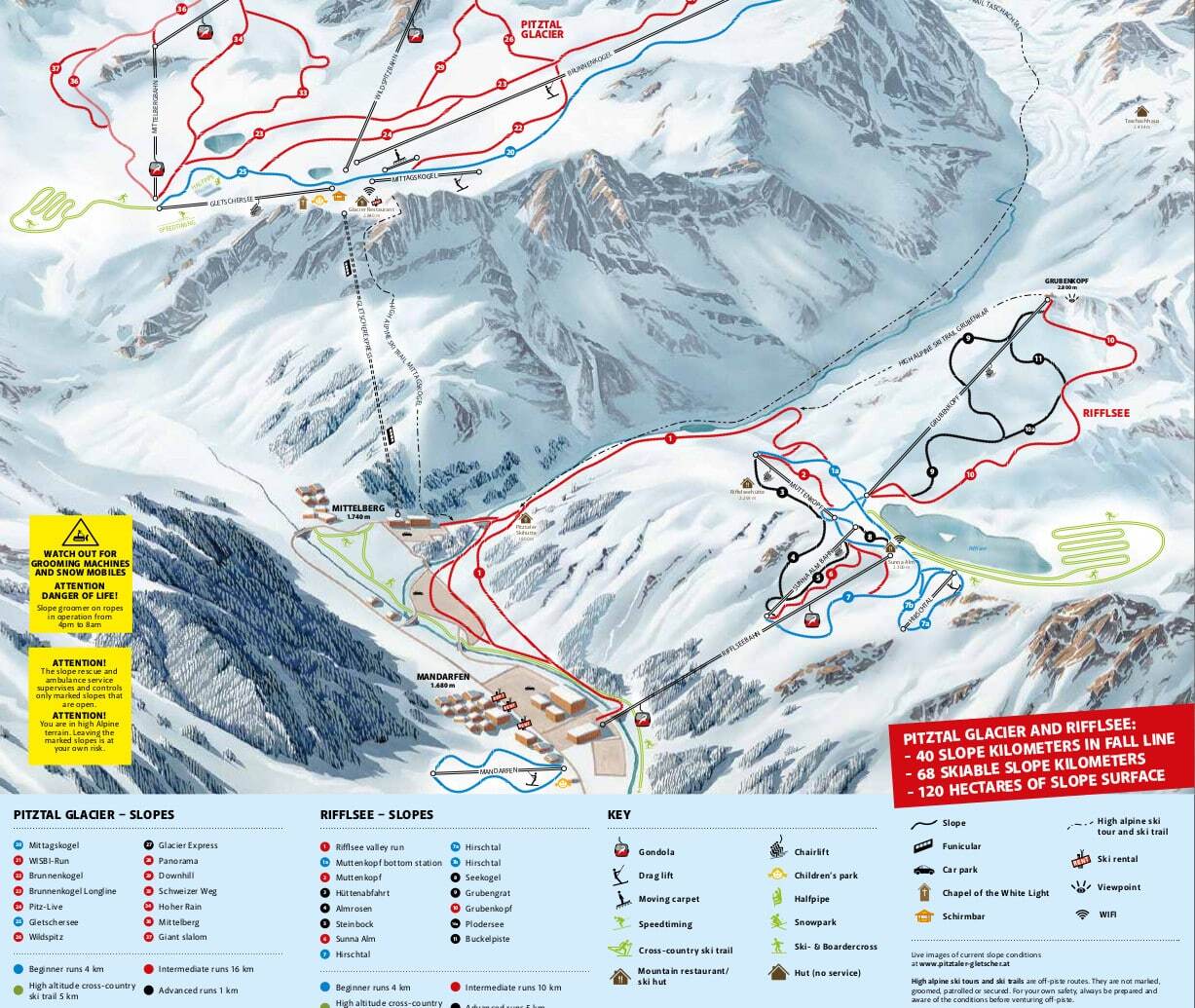Austrian Glacier Plans To Be 100% Solar Powered in Winter
The Pitztal glacier, home of Austria’s highest ski slopes and with a seven-month ski season, one of the world’s longest, lasting from early-autumn to mid-spring, has announced its intention to become fully solar electricity powered.

The Pitztal glacier, home of Austria’s highest ski slopes and with a seven-month ski season, one of the world’s longest, lasting from early-autumn to mid-spring, has announced its intention to become fully solar electricity powered.
Pitztal has been aiming to lead on environmental initiatives since 2011 and first added a major solar array, at 2840m above sea level, which works much more efficiently than solar farms located closer to sea level, in 2015. The solar array’s panels are suspended on cables allowing them to be tilted to clear snow and follow the sun. It meets all of the centre’s needs in the summer month, and about 30% in the winter.
“Around a third more solar energy can be generated from photovoltaics than at lower altitudes due to the higher UV content and the radiation from the large white snow areas,” a Pitztal spokesperson explained.

The system generates an average of 1.4 million kwH of clean electricity from solar energy every year. The remaining electricity required in winter still comes from other regional renewable energy sources including hydro, wind energy, biomass, other photovoltaics and biogas, but Pitztal says it now plans to expand the photovoltaic system to become 100% energy self-sufficient.
Although they have not put date on when this will be achieved, a statement from Pitztal says they intend for it to happen, “in the near future.”
“(Full green-energy self-sufficiency) …is achieved, on the one hand, through technical innovation – the new Glacier Express not only enables energy-saving operation, but can even generate some energy during the journey – but also through further expansion of the photovoltaic system,” the statement continues.
The glacier centre is already making energy savings from more careful operation of the lifts, snowmaking and the preparation of the slopes, cutting energy use particularly at off-peak times in the morning and late afternoon.
Initiatives include cutting lift speeds at periods of low usage, not grooming every slope every day, stopping night skiing and limiting seat heating to core times. They are also saving energy through more efficient design of gondola cabins.
With the glacier located in a sensitive natural area, a very careful approach is being taken with the intention of meeting the requirements of environmental authorities through an intensive planning phase currently underway.




